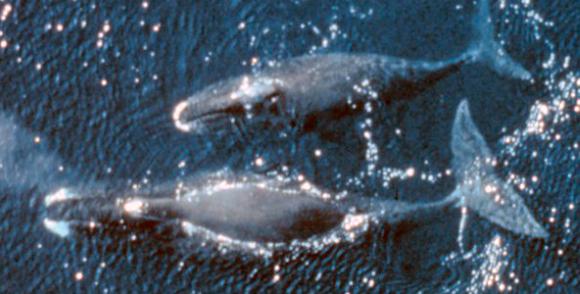 Australian researchers using a genetic ‘clock’ to predict animals’ lifespans have determined that bowhead whales may live for an average of 268 years. They came to this conclusion from studying 42 genes and a chemical process they undergo called methylation that can be used to predict life expectancy. The new research suggests that there may be bowheads swimming in icy northern waters today that were alive when Nelson fought the Battle of Trafalgar.
Australian researchers using a genetic ‘clock’ to predict animals’ lifespans have determined that bowhead whales may live for an average of 268 years. They came to this conclusion from studying 42 genes and a chemical process they undergo called methylation that can be used to predict life expectancy. The new research suggests that there may be bowheads swimming in icy northern waters today that were alive when Nelson fought the Battle of Trafalgar.
Bowhead whales have long been considered the longest living mammals. While no bowheads have been found as old as that predicted by the researchers, one bowhead was found to be 211 years old based on levels of aspartic acid in the whale’s eye. In a number of cases, stone and steel harpoons dating from the 18th century have been dug from the carcasses of bowhead whales. In 2007, a bowhead was found with a fragment of a patented exploding lance that was manufactured in the 1880s.
The bowhead is the only baleen whale native exclusively to the Arctic and sub-arctic waters. The species is named after its characteristic massive triangular skull, which is used to break through Arctic ice.
The bowhead was an early whaling target. The population was severely reduced before a 1966 moratorium was passed to protect the species. Of the five stocks of bowhead populations, three are listed as “endangered”, one as “vulnerable”, and one as “lower risk, conservation dependent” according to the IUCN Red List. The global population is assessed as of least concern.
While the bowhead may be the longest-lived mammal, it shares the Arctic waters with the Greenland shark which can live to 400 years old. Apparently, the secret to a long life is to swim in cold water which dramatically slows the rate of metabolism reducing the rate of cellular decay.
